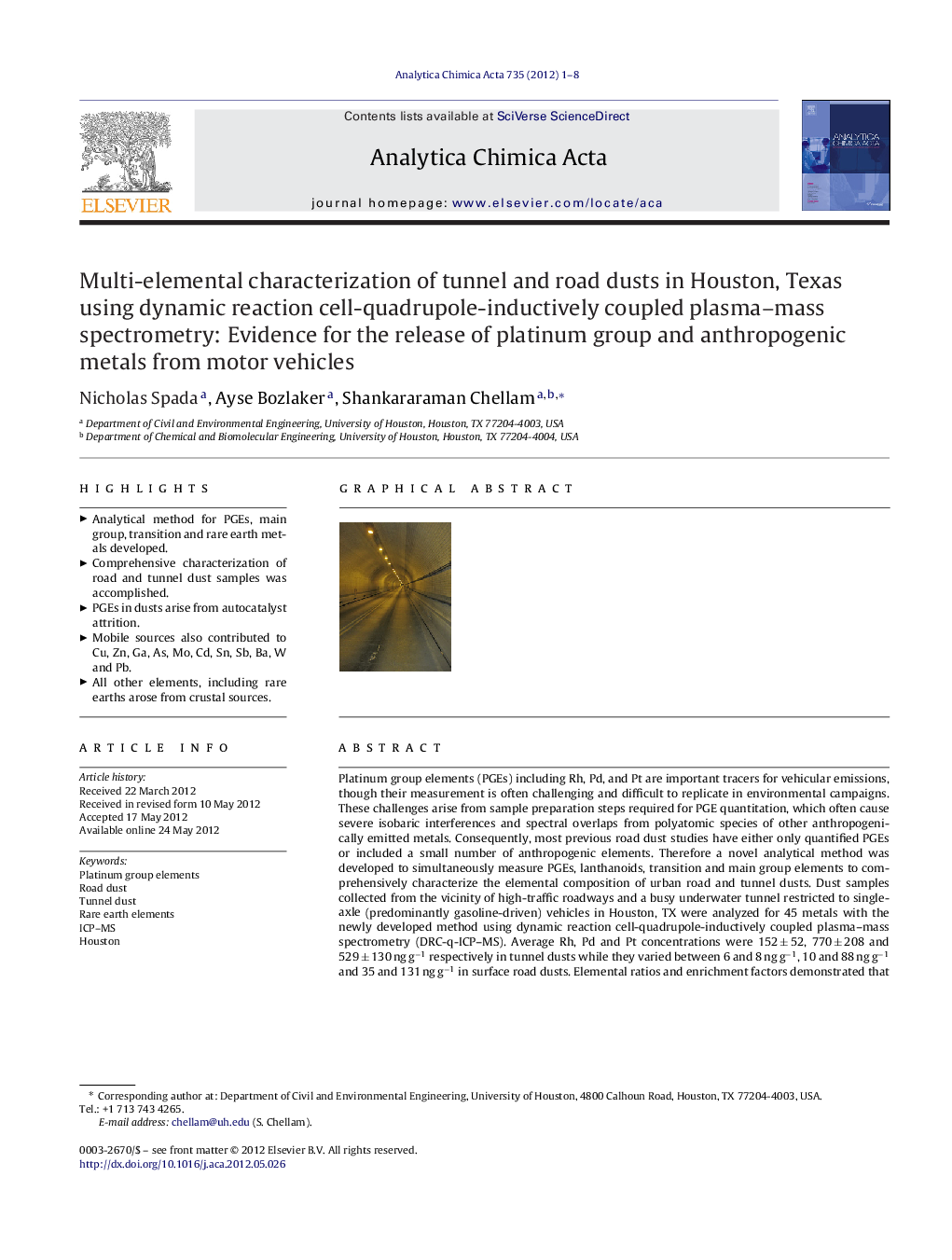| کد مقاله | کد نشریه | سال انتشار | مقاله انگلیسی | نسخه تمام متن |
|---|---|---|---|---|
| 1165991 | 1491097 | 2012 | 8 صفحه PDF | دانلود رایگان |

Platinum group elements (PGEs) including Rh, Pd, and Pt are important tracers for vehicular emissions, though their measurement is often challenging and difficult to replicate in environmental campaigns. These challenges arise from sample preparation steps required for PGE quantitation, which often cause severe isobaric interferences and spectral overlaps from polyatomic species of other anthropogenically emitted metals. Consequently, most previous road dust studies have either only quantified PGEs or included a small number of anthropogenic elements. Therefore a novel analytical method was developed to simultaneously measure PGEs, lanthanoids, transition and main group elements to comprehensively characterize the elemental composition of urban road and tunnel dusts. Dust samples collected from the vicinity of high-traffic roadways and a busy underwater tunnel restricted to single-axle (predominantly gasoline-driven) vehicles in Houston, TX were analyzed for 45 metals with the newly developed method using dynamic reaction cell-quadrupole-inductively coupled plasma–mass spectrometry (DRC-q-ICP–MS). Average Rh, Pd and Pt concentrations were 152 ± 52, 770 ± 208 and 529 ± 130 ng g−1 respectively in tunnel dusts while they varied between 6 and 8 ng g−1, 10 and 88 ng g−1 and 35 and 131 ng g−1 in surface road dusts. Elemental ratios and enrichment factors demonstrated that PGEs in dusts originated from autocatalyst attrition/abrasion. Strong evidence is also presented for mobile source emissions of Cu, Zn, Ga, As, Mo, Cd, Sn, Sb, Ba, W and Pb. However, all other elements including rare earths most likely arose from weathering, erosion and resuspension of crustal material. These are the first such detailed measurements in Houston, the largest city in TX and fourth largest in the United States. We posit that such investigations will assist in better understanding PGE concentrations in urban environments while providing elemental data necessary to better understand anthropogenic influences on their biogeochemical cycling.
Figure optionsDownload as PowerPoint slideHighlights
► Analytical method for PGEs, main group, transition and rare earth metals developed.
► Comprehensive characterization of road and tunnel dust samples was accomplished.
► PGEs in dusts arise from autocatalyst attrition.
► Mobile sources also contributed to Cu, Zn, Ga, As, Mo, Cd, Sn, Sb, Ba, W and Pb.
► All other elements, including rare earths arose from crustal sources.
Journal: Analytica Chimica Acta - Volume 735, 20 July 2012, Pages 1–8